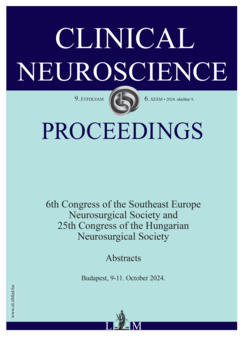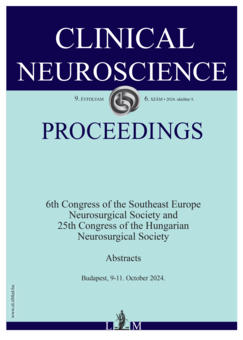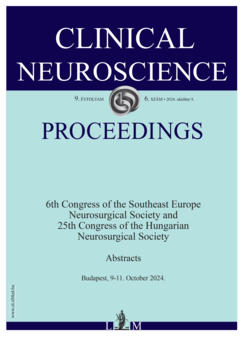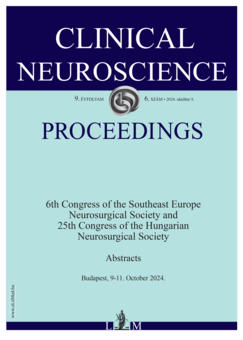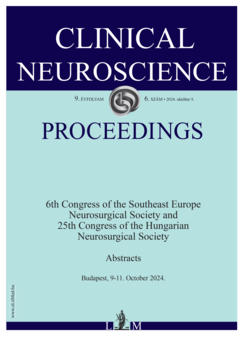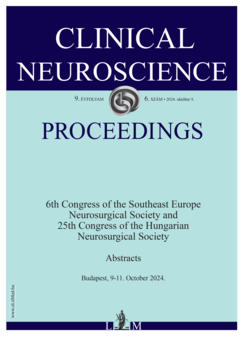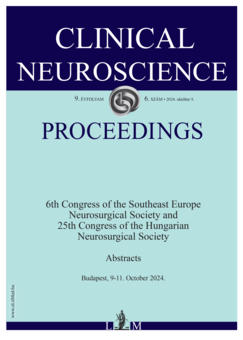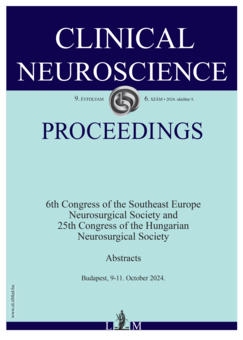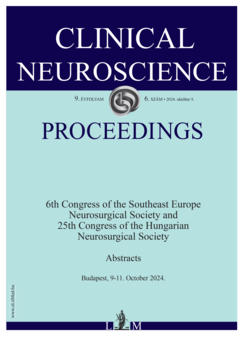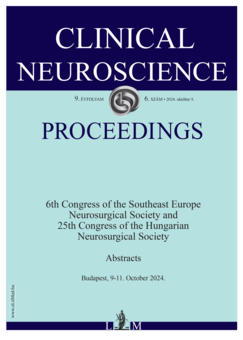Az eLitMed.hu orvostudományi portál a böngészés tökéletesítése érdekében cookie-kat használ.
Ha bővebb információkat szeretne kapni a cookie-k használatáról és arról, hogyan módosíthatja a beállításokat, kattintson ide: Tájékoztató az eLitMed.hu Cookie-használatáról.
Részletes keresés
Kérjük, állítsa be a paramétereket!
Találatok száma: 150
Advancements in spinal surgery technology
In 1887, Horsley performed the first spinal surgery, marking the significant milestone in medical history by successfully removing tumor from spinal cord.
Impacts on survival period of surgical interventional timing in patients with vertebral metastases
Spinal vertebral metastases can lead to profound neurological impairments caused by compression of myelon, resulting in a notable reduction in both survival period and quality of life.
The importance of the cervical sagittal balance in ACDF procedures on postoperative neck pain
To determine the possible relation between cervical sagittal balance and neck pain in patients having anterior cervical spine (ACS) surgery. Prospective study was made to compare the clinical and radiographic results of an anterior cervical discectomy and fusion (ACDF) surgery for contiguous two-level cervical degenerative disease (CDD).
Radiosurgery for deep seated AVM’s
Brain arteriovenous malformations (AVMs) are vascular abnormalities that consist of a nidus, rather than a capillary bed, connecting a vein and an artery.
Brachial plexopathy due to the oncological radiation treatment related to malignancy?
Radiation-induced plexopathy is a debilitating complication that can result from cancer treatment, leading to progressive motor and sensory deficits. This study aims to assess the outcomes of surgical intervention in patients with radiation-induced neuropathy who did not respond to conservative treatments.
Intracranial chloroma: A case report
Granulocytic sarcoma, previously known as chloroma, is a rare tumor that most commonly occurs in patients with myeloblastic leukemia. It predominantly affects the orbital cavity, with cerebral localization being a rare entity.
Advancements in neurosurgery: Loop X technology and the role of nurses and technician in spinal fixation
Neurosurgical procedures are extremely complex and require a high level of precision.
Outcomes of stereotactic radiosurgical treatment for glomus jugulare tumors: a single center study of 49 cases
Glomus tumors are rare benign skull base neoplasms that arise from chemo¬receptor paraganglionic cells, involving crucial structures such as cerebrovascular structures and lower cranial nerves. stereotactic radiosurgery has an increasing role in the management of glomus tumors as surgeries are complex and have a higher rate of morbidity and complication rates. The authors of this study examine the outcomes of radiosurgery treatment in a single centre patient population.
Predicting sensory outcomes with machine learning in deep brain stimulation
In clinical deep brain stimulation (DBS) applications, stimulation-induced sensations are typically viewed as undesired side effects. However, in emerging contexts such as computer-brain interface applications, intentionally inducing sensations may be desirable.
Moulded osteomyofascial pedicled split (MOPS) craniotomy flap in reconstruction of anterior cranial fossa defect Pilot study of a novel technique
Anterior cranial fossa defects (ACF) still remains a reconstructive challenge to neurosurgeons due to difficult location, inaccessibility and unfavorable vascular anatomy. Usual reconstructive methods reported complications like recurrent cerebrospinal fluid leak due to bone resorption and tissue breakdown.
1.
2.
3.
4.
5.
Egészségpolitika
Hadiállapotként kezeli és így is reagál a kormány az egészségügy „rendezésére”1.
Idegtudományok
Neurofeedback: az ADHD-val küzdő gyerekek fejlesztéséhez is használható módszert oktatnak Vácon2.
3.
4.
5.
